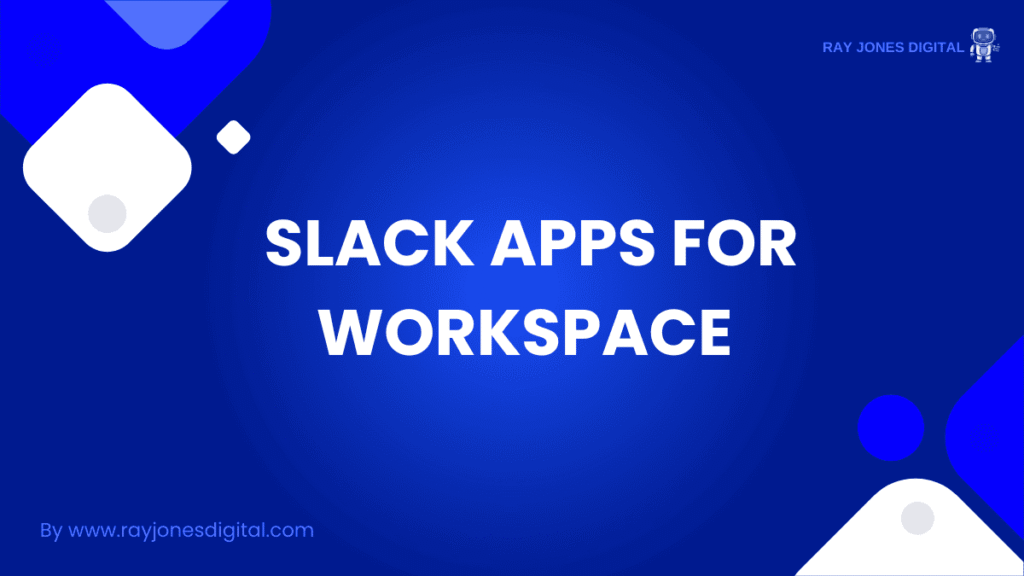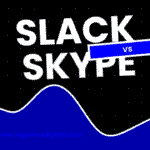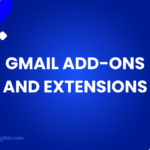
Slack has transformed from a simple messaging platform into a comprehensive workspace hub that powers millions of teams worldwide. The real magic happens when you enhance Slack Apps with carefully selected apps that automate routine tasks, streamline workflows, and boost productivity across your entire organisation.
The app ecosystem surrounding Slack has exploded with innovative solutions designed to eliminate repetitive work and create seamless integrations between your favourite business tools. From project management to customer support, these applications turn Slack into a central command centre where teams can accomplish more with less effort.
This comprehensive guide explores the most powerful Slack apps available for 2026, focusing on automation capabilities that save time, reduce errors, and help small to medium businesses compete more effectively. We’ll examine each app’s key features, pricing structure, and integration capabilities to help you build a smarter workspace.
Why Slack Apps Matter for Modern Workspaces
The average knowledge worker switches between applications more than 1,100 times per day, according to recent productivity research. This constant context switching destroys focus and creates inefficiencies that compound throughout the workday. Slack apps address this challenge by bringing essential business functions directly into your team’s primary communication platform.
The Power of Centralised Automation
Modern Slack apps excel at automation, handling routine tasks that previously required manual intervention. These automations range from simple notifications to complex workflows that coordinate multiple systems without human oversight.
Reduced Manual Work
The best Slack apps eliminate repetitive tasks through intelligent automation. Instead of manually updating project statuses, sending follow-up messages, or creating reports, these tools handle routine work whilst you focus on strategic initiatives.
Improved Team Coordination
Automation ensures consistent communication and reduces the risk of important information falling through cracks. Teams receive timely updates, deadlines are tracked automatically, and stakeholders stay informed without constant manual updates.
Enhanced Decision Making
Real-time data and automated reporting provide teams with current information needed for quick decisions. Rather than waiting for weekly reports or manual updates, teams access fresh insights directly within their workflow.
Essential Categories of Slack Apps
Project Management Integration
Project management apps transform Slack into a comprehensive project coordination platform. These tools bring task management, timeline tracking, and resource allocation directly into your team conversations.
Key Benefits:
- Real-time project updates within channel discussions
- Automated task assignments and deadline reminders
- Visual project timelines accessible from chat
- Resource allocation tracking and notifications
Customer Support Automation
Customer support apps connect your help desk systems with team communication, ensuring faster response times and better customer experiences. These integrations provide context-rich notifications and streamlined escalation processes.
Key Benefits:
- Instant ticket notifications with full context
- Automated routing based on issue type or priority
- Team collaboration on complex support cases
- Performance tracking and reporting automation
File Storage and Collaboration
File storage apps create seamless bridges between your document repositories and team discussions. These tools eliminate the friction of finding, sharing, and collaborating on important files.
Key Benefits:
- Instant file sharing without leaving conversations
- Automated version control and update notifications
- Collaborative editing directly within Slack
- Smart search across all connected storage platforms
Top Slack Apps for 2026
1. Asana for Slack
Asana’s Slack integration creates a powerful project management ecosystem within your communication platform. Teams can create tasks, update project statuses, and track progress without switching between applications.
Key Features:
- Create and assign tasks directly from Slack messages
- Automated project updates and milestone notifications
- Visual project timelines and progress tracking
- Custom workflows for different project types
Automation Capabilities:
- Automatic task creation from specific message types
- Deadline reminders and escalation notifications
- Progress reports generated and shared automatically
- Integration with time tracking and resource management
Pricing: Free for basic features; Premium plans from £8.99 per user per month.
Best For: Teams requiring comprehensive project management with strong communication integration.
2. Trello Power-Up
Trello’s Slack integration brings visual project management directly into your team conversations. The kanban-style approach works particularly well for teams that prefer visual task management.
Key Features:
- Visual board updates shared automatically
- Card creation and assignment from Slack messages
- Automated notifications for board changes
- Integration with Trello’s automation platform, Butler
Automation Capabilities:
- Automatic card movement based on predefined triggers
- Scheduled board updates and progress reports
- Integration with external tools through Butler automation
- Custom notification rules for different board activities
Pricing: Free for basic features; Business Class from £4.17 per user per month.
Best For: Teams preferring visual project management with flexible automation options.
3. Google Drive for Slack
Google Drive integration creates seamless file sharing and collaboration within Slack conversations. Teams can access, edit, and share documents without leaving their communication platform.
Key Features:
- Instant file sharing with automatic permission management
- Real-time collaboration notifications
- Document preview and editing within Slack
- Advanced search across all connected files
Automation Capabilities:
- Automatic file sharing based on conversation context
- Version control notifications and conflict resolution
- Scheduled backup and organisation tasks
- Integration with Google Workspace automation tools
Pricing: Free for basic features; Google Workspace plans from £4.99 per user per month.
Best For: Teams heavily using Google Workspace tools requiring seamless file collaboration.
4. Zapier for Slack
Zapier transforms Slack into a central automation hub by connecting thousands of different applications. This powerful integration platform enables complex workflows that span multiple business tools.
Key Features:
- Connect 5,000+ applications to Slack
- Visual workflow builder for complex automations
- Conditional logic and multi-step processes
- Extensive filtering and formatting options
Automation Capabilities:
- Automatic data synchronisation between platforms
- Complex workflow triggers based on multiple conditions
- Scheduled tasks and recurring automations
- Error handling and notification systems
Pricing: Free for basic automations; Professional plans from £15.99 per month.
Best For: Businesses requiring extensive automation across multiple platforms and tools.
5. Calendly for Slack
Calendly’s Slack integration streamlines meeting scheduling and coordination. Teams can book meetings, send invitations, and manage calendars directly within their communication platform.
Key Features:
- Meeting scheduling directly from Slack messages
- Automated calendar invitations and reminders
- Team availability coordination
- Integration with video conferencing platforms
Automation Capabilities:
- Automatic meeting reminders and follow-ups
- Calendar synchronisation across team members
- Booking confirmations and reschedule notifications
- Integration with CRM and project management tools
Pricing: Free for basic features; Professional plans from £6.67 per user per month.
Best For: Teams requiring streamlined meeting coordination and calendar management.
6. Salesforce for Slack
Salesforce integration brings customer relationship management directly into team conversations. Sales teams can access customer data, update records, and collaborate on deals without leaving Slack.
Key Features:
- Customer record access within conversations
- Automated deal and lead notifications
- Team collaboration on sales opportunities
- Real-time dashboard updates and alerts
Automation Capabilities:
- Automatic lead assignment and routing
- Deal stage notifications and alerts
- Performance tracking and reporting
- Integration with marketing automation platforms
Pricing: Included with Salesforce subscriptions; standalone plans from £20 per user per month.
Best For: Sales teams requiring CRM integration with strong collaboration features.
7. Polly for Slack
Polly transforms Slack into a comprehensive survey and feedback platform. Teams can create polls, gather opinions, and make data-driven decisions directly within their communication channels.
Key Features:
- Anonymous and identified polling options
- Automated survey distribution and reminders
- Real-time results and analytics
- Integration with reporting platforms
Automation Capabilities:
- Scheduled recurring surveys and polls
- Automatic result compilation and sharing
- Conditional follow-up questions
- Integration with data analysis tools
Pricing: Free for basic features; Professional plans from £2.50 per user per month.
Best For: Teams requiring regular feedback collection and decision-making support.
8. Zoom for Slack
Zoom’s Slack integration creates seamless video conferencing within team conversations. Teams can start meetings, share recordings, and coordinate video calls without switching applications.
Key Features:
- One-click meeting initiation from any channel
- Automatic meeting recordings and sharing
- Calendar integration and scheduling
- Participant management and controls
Automation Capabilities:
- Automatic meeting reminders and notifications
- Recording transcription and sharing
- Follow-up task creation from meeting content
- Integration with project management platforms
Pricing: Free for basic features; Professional plans from £11.99 per user per month.
Best For: Teams requiring frequent video conferencing with strong integration capabilities.
Advanced Automation Strategies
Workflow Orchestration
The most powerful Slack implementations combine multiple apps to create sophisticated workflows. These orchestrated systems handle complex business processes automatically, reducing manual intervention and improving consistency.
Multi-App Workflows
Consider workflows that span multiple applications. For example, a customer support ticket might trigger notifications in Slack, create tasks in your project management system, and update customer records in your CRM automatically.
Conditional Logic
Advanced automation platforms like Zapier enable conditional workflows that respond differently based on specific criteria. These intelligent systems can route tasks, escalate issues, or trigger different actions based on predefined conditions.
Data Integration and Reporting
Modern Slack apps excel at bringing data from multiple sources into unified reports and dashboards. These integrations provide real-time insights that support faster decision-making.
Automated Reporting
Set up automated reports that compile data from multiple sources and share insights directly within relevant Slack channels. These reports can track project progress, sales performance, or customer satisfaction metrics.
Real-Time Dashboards
Create real-time dashboards that update automatically as data changes across your business systems. Team members can access current information without manual report generation or data compilation.
Implementation Best Practices
Start Small and Scale Gradually
Begin with one or two essential apps that address your most pressing workflow challenges. Allow your team to adapt to these tools before introducing additional complexity.
Identify Priority Use Cases
Focus on automations that provide immediate value. Common high-impact areas include:
- Repetitive notification tasks
- File sharing and collaboration friction
- Meeting coordination and scheduling
- Customer support routing and escalation
Establish Clear Governance
Create guidelines for app installation, configuration, and usage. Clear governance prevents app sprawl and ensures consistent implementation across your organisation.
App Approval Process
Implement a simple approval process for new app installations. This process should balance flexibility with security and cost considerations.
Configuration Standards
Establish standard configurations for commonly used apps. Consistent setup reduces training requirements and ensures predictable behaviour across teams.

I am Ray Jones Digital
My current occupations: a Digital Marketer, Local SEO expert, Link Builder, and WordPress SEO specialist. Shopify SEO, Ecommerce Store Management, and HTML & WordPress Developer I have been practicing the above mentioned services for more than 10 years now As an SEO expert working with your ongoing projects.



